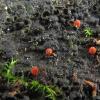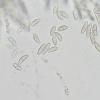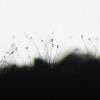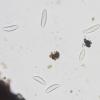
17-09-2025 10:50
Heather MerryleesHi there!I am hoping for any advice on the identif

27-11-2025 11:46
Thomas Læssøehttps://svampe.databasen.org/observations/10493918

29-11-2025 08:40
 Andreas Millinger
Andreas Millinger
Hello,on a splintered part of a branch on the grou

28-11-2025 16:45
Nogueira HéctorNovember 23, 2025 Requejo de Sanabria (León) SPAI

25-11-2025 14:24
Thomas Læssøehttps://svampe.databasen.org/observations/10490522

27-11-2025 15:41
Thomas LæssøeSpores brownish, typically 4-celled; 26.8 x 2.4;

27-11-2025 12:01
Thomas Læssøehttps://svampe.databasen.org/observations/10496727

27-11-2025 11:31
Thomas LæssøeCollectors notes: Immersed ascomata, erumpent thro

23-09-2025 13:31
Thomas Læssøehttps://svampe.databasen.org/observations/10534623

26-11-2025 18:13
The entire run of Mycotaxon is now available throu
I found this probable Cosmospora on another sordariomycete, probably Lasiosphaeria spermoides. But the perithecia of the Nectriaceae species are situated in areas of large decomposition of the Lasiosphaeria. So the actual substrate could also be the wood. It is Fagus sylvatica.
There is also a forest of an anamorph. It covers almost the entire part of the Lasiosphaeria. Possibly this is the anamorph of the Nectriaceae species.
Here are the data:
Perithecia: red, with a conspicuous papilla
Ascospores: 18-25 x 7-8 µm, 1-septate, constricted at the septum, warted, slightly unsymmetrical, tapering at both ends
Conidia: 27-33 x (6,5) 7,5-10 µm, 0-3-septate (mostly 3-septate), slightly curved
I know, that Nectriaceae are not studied sufficiently yet and hard to determine. Is there at least a working name or a species complex, where I can put this collection in?
Best regards
Steffen
Steffen

"Cosmospora" is very difficult without culture and molecular data.
I think your fungus could remain in the "flavoviridis" complex and the conidia that you show are not the asexual state of a Cosmospora.
You should cultivate the ascospores of your fungus to know its asexual state.
Good luke,
Christian
thank you for your answer.
How can I cultivate the ascospores? Is it likely to determine the species knowing both states?
Kind regards
Steffen

here is an abstract of a recent publication explaining how cultivate the ascospores.
Cultures of the living specimen were made on PDA (Potato Dextrose
Agar) with 5 mg/l of streptomycin in Petri dishes 9 cm diam. A mass
of ascospores and asci was removed from a perithecium with a fine
needle and placed in a drop of sterile water that was stirred with a
needle to distribute the elements on the slide. A part of the drop
containing ascospores was placed on PDA using a sterile micropipette,
then the Petri dish was incubated at 25°C.
Cheers,
Christian
thank you. Let's see, I am going to try it.
Regards
Steffen
a friend of mine and I tried to cultivate the anamorph of the fungi. He works at a laboratory. We used CPA (Carrot piece agar), which should be one of the most suitible media for macroconidia of Fusarium, and SNA. But both samples were overgrown by Penicillium spec. I think I am not able to get the anamorph. Is there a researcher, who is interested in it? Maybe Amy Rossman, Gary Samuels or you?
Best regards
Steffen



